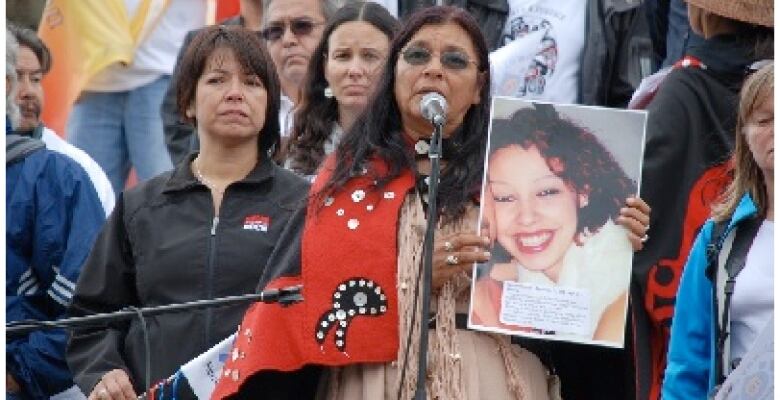Improved cell service coming to B.C.'s Highway of Tears
Adding phone reception was critical recommendation in 2006 report

Improved cellphone service is coming to two highways crossingBritish Columbia, including the section of remote road known as the Highway of Tears.
Seventy per cent of Highway 16 already has some coverage, but the province said Wednesdaythe $11.7-million project will bring cell service to the remaining 252 kilometres between Smithers and Prince Rupert.
Cellphonereception was a critical recommendation in the Highway of Tears Symposium report in 2006, which sought ways to make the isolated road safer,especially for Indigenous women and girls,after decades of disappearances and killings in the area.
Gladys Radek's niece, Tamara Chipman, disappearedon Sept. 21, 2005. She was last seen hitchhiking along Highway 16, just outside of Prince Rupert.
Radek said she was "thrilled" to hear about the cell service, even though it's takenmore than 15 years to arrive.
"It's better late than never," she told CBC on Wednesday. "Evenif girls had cell phones, they wouldn't be able to reach out for help anyway. So I think the cellphone towers is a long time coming, and I'm just elated that it is happening."

Barb Ward-Burkitt, executive director of thePrince George Native Friendship Centre, said the change "serves as an important stepof reconciliation and honouring for murdered and missing sisters, daughters, mothers, aunties and their families."
"We must continue to do everything in our power to prevent violence against Indigenous women and girls to ensure they are safe to travel anywhere in our province, but especially between communities along Highway 16," she said in a statement.
The project is set to begin this spring and will add 12 cell towers as well as improve connectivity at three rest stops, with the province and Ottawa each contributing just over $2 million and Rogers Communications picking up the remainder of the bill.
Telushas connected the remaining 500 kilometres of Highway 16 since 2013.
Highway 16 between Prince George and Prince Rupert became known as the Highway of Tears more than two decades ago, a reference to the many Indigenous women who have gone missing or been murdered along the route since the 1970s.
Premier John Horgan on Wednesday said cost has been a barrier to the province in the past when it came to improving cell range. He said the government needed to partner with a private company like Rogers to bridge the financial gap.
"This improvement in cell service is long overdue,"Horgan told CBC's On The Island. "It's not inexpensive to run towers, it's not inexpensiveto put broadband and fibre optics in place in rural and remote communities."
RCMP files link a total of 18 murders or disappearances to the Highway of Tears region, but Carrier Sekani Family Services in Prince George sayson its websitethe number likely exceeds 40.
Hwy14 improvements
In a separate announcement, B.C. saidnearly $5 million in cell service upgrades arecoming to Highway 14 on Vancouver Island between Sooke and Port Renfrew, with work expected to be complete by late October.
The Highway 14 improvements will bring cell service to Port Renfrew, Shirley, Otter Point, Jordan River,some Pacheedaht First Nation communities and first responders.
"We also anticipate faster responses when people get into trouble,"said Vickie Weber,senior manager withJuan de Fuca Search and Rescue.
"Now, if they can call 911 right away when they get into trouble, we can talk to them right away, get a real clear picture of what is going on. As well, the cell signal provides a location to emergency services, so that really helps us as well."
Karl Ablack, president of the Port RenfrewChamber of Commerce, said cell service will fuel business in the small seaside community.
"It's going to allow peace of mind to those visitors to market that trek out here," Ablack said."For businesses that are now wanting to open up shop here in Port Renfrew, having that connectivity so tourists and visitors can access information as they come into Port Renfrew is huge."
With files from Betsy Trumpener, Kieran Oudshoorn and The Canadian Press












_(720p).jpg)


 OFFICIAL HD MUSIC VIDEO.jpg)
.jpg)



























































































